1848 – 1926 Artist, Traveller, Signwriter, House Painter & Decorator, Teacher
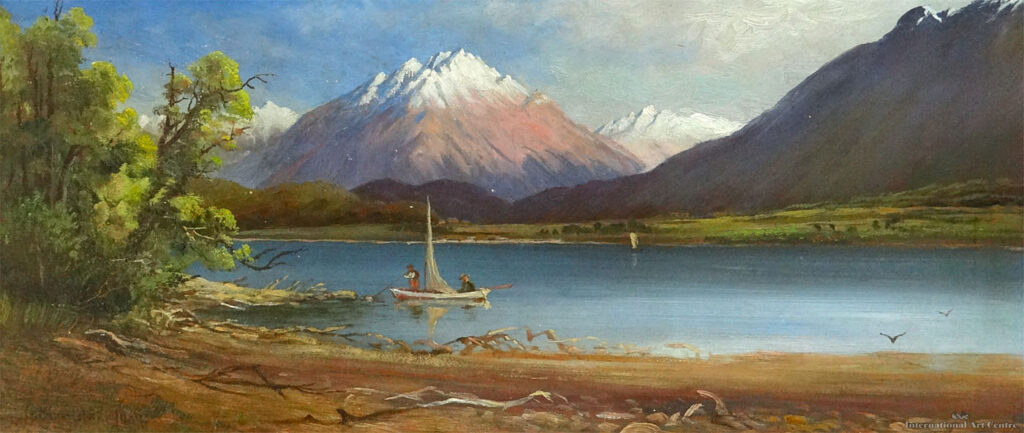
https://www.internationalartcentre.co.nz/auctions/catalogue/201304/ML24703/Diamond-Lake-Glenorchy
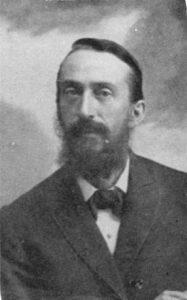
Phillippe Patrick O’Shea Papers. Reference: MSPapers-5059-06-0.5
Charles Blomfield was a hugely prolific and successful landscape painter based in Auckland in the late colonial period. He was one of New Zealand’s first professional artists who dedicated himself to making a living and supporting his family through his creative industry alone, in a fledgling city with a relatively small population and nascent art establishment. His full biography can be found here https://teara.govt.nz/en/biographies/2b28/blomfield- charles
Today Blomfield is widely recognised for his depictions of the Pink and White Terraces, a unique geological feature that graced the shores of Lake Rotomahana before the eruption of Mt. Tarawera in 1886. The Terraces, once regarded as the eighth natural wonder of the world, attracted many international tourists and before the eruption Blomfield produced as many as 60 editions of his original views, made to order as souvenirs for visitors from Europe, America and Australia. Many more copies were destined for exhibitions here and abroad, including for display at the Rotomahana Hotel in the 1880s, as featured works at the Auckland Society of Arts in 1883, at his own Gallery of New Zealand Art in the Victoria Arcade, and the 14 copies Blomfield sent to the Colonial and Indian Exhibition in London in June, 1886, and therefore on view just as Tarawera erupted. It has been established from Blomfield’s own sales records that in total, from before and after the 1886 eruption, he produced well over 200 Terrace paintings (of various sizes on canvas, panels, and cardboard) throughout his long career.
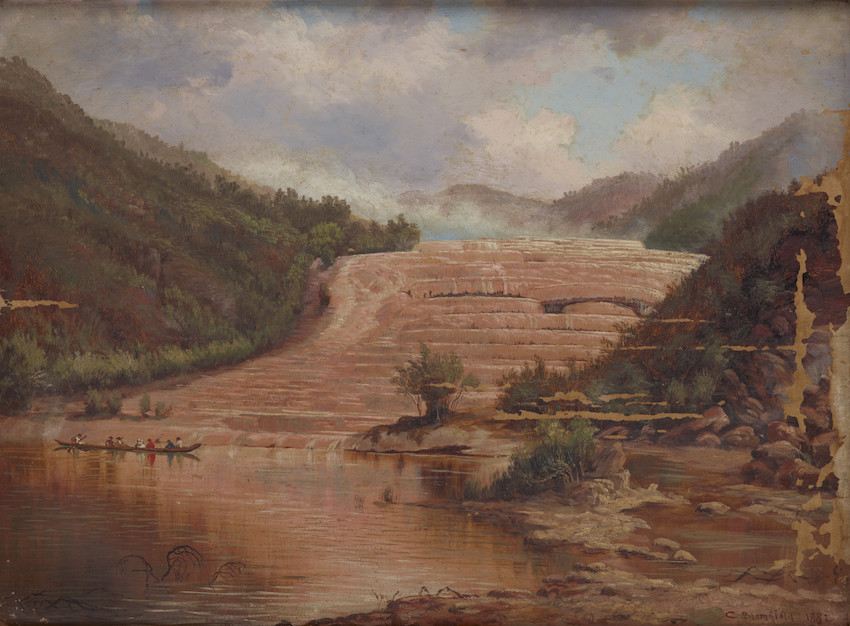
https://collections.tepapa.govt.nz/object/38494
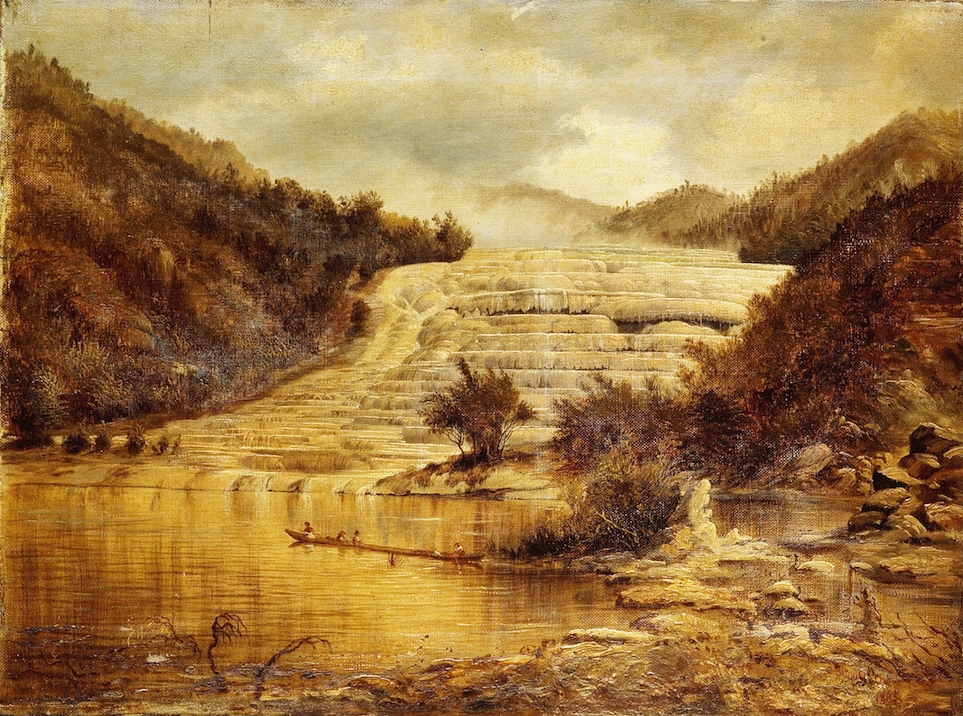
This abundance of Terrace imagery and its promotion made Blomfield the most successful landscape painter in Auckland during the 1880s and gave him a very good income (for a brief time at least). Today, no less that then, Blomfield’s name and artistic output has become synonymous with an iconic landscape that no longer exists, the two tied together across time so successfully that it is hard to imagine one without the other. Examples of these paintings are held in every major cultural institution in New Zealand (some have more than one replica of the same prospect), reproduced ad infinitum to illustrate texts on a variety of subjects including history, geology, tourism (then and now), the recent and ongoing search for the remains of the Terraces under Lake Rotomahana, and routinely appear in auction catalogues (a pair offered at auction in 2020 realized $112,000).
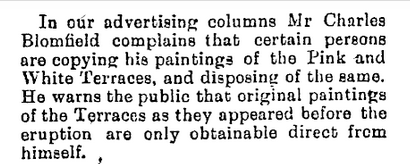
History, particularly art history, has not been kind to Charles Blomfield. A self-taught artist, he was a lifelong member of the Auckland Society of Arts, as a committee member and exhibitor, other arts societies around the country and the Auckland Art Gallery, along with a number of early public galleries, acquired his work as early as the 1880s. However, if there is one place where you will find very little discussion about Charles Blomfield, other than a passing nod to his Terrace paintings, it is in the realm of New Zealand art history. In 1915, a reviewer of the time thought Blomfield was “tempted to make pictures for the window- pauser rather than for the connoisseur” while later art historians have denied Blomfield any artistic merit, suggesting his “saleroom reputation far outstripped his artistic one, “perhaps because of his almost production line method of repeating subjects that sold well.” For another art historian Blomfield “concerned himself with the superficially indigenous elements of the New Zealand scene but his works lack ‘atmosphere’ and has instead the dark airlessness of a Royal Academy set piece” and for another Blomfield lived in the past, his Terrace paintings described as “commercial souvenirs” of an unspoilt landscape that continued to exist in his imagination long after its destruction and despoilation”. On the one hand almost revered in his lifetime, largely for recording a lost geological marvel, on the other, subject to criticism in his later life for his old fashioned approach to landscape painting, Blomfield has been either held in outright distain by the art establishment or totally ignored.
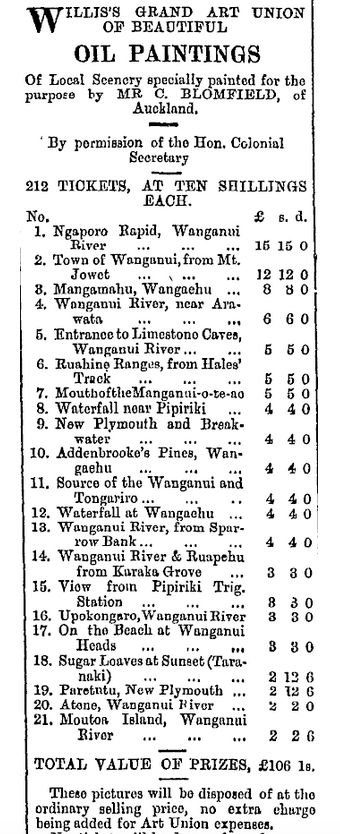
Even today, it is hard to grasp the scale of Blomfield’s artistic output. There was so much more to Blomfield’s oeuvre that the Pink and White Terrace paintings. It is estimated that he produced well over 700 paintings covering all kinds of iconic and no so well-known New Zealand landscape subjects including the Wanganui River, many Auckland locations, South Island lake scenes, Kauri and bush settings, Whangarei, Maori settlements, Fiordland, Taranaki and much, much more. But the emphasis on the Terrace paintings, especially today in terms of auction appearances and sales, has, if nothing else obscured his valuable contribution to the development of NZ’s plein-air tradition, evident in the sketches and painting he made on his many expeditions into remote areas of NZ bush, before easy access had been established.
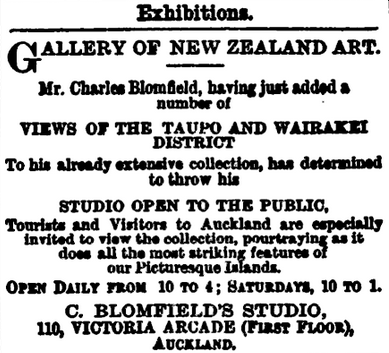
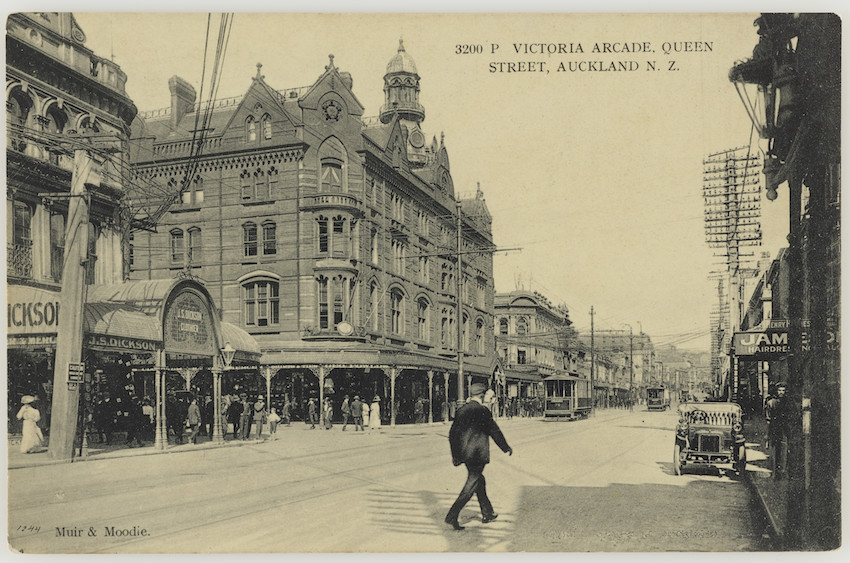
https://collections.tepapa.govt.nz/object/323050
Most interesting, and this is something Blomfield deserves more credit for, is the considerable energy and entrepreneurship he invested into making his career as an artist profitable and successful. The strategies he employed to promote his paintings, generate sales and build and maintain his ‘artist’ profile were innovative and thorough. Aside from making sure his name was always in the public realm, either through advertising, exhibitions reviews or writing to the newspapers, Blomfield took part in art unions and raffles, sold collections of paintings through auction houses, gave lessons in sketching and landscape painting, lectured in landscape art, displayed new works in shop windows, continually promoted himself as a sign writer and general house decorator, and exhibiting in New Zealand and elsewhere whenever the opportunity presented itself.
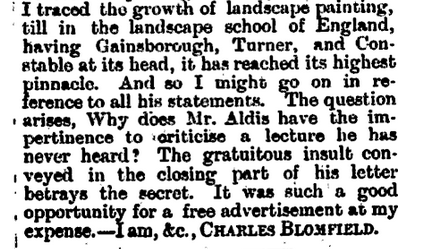
It must have been very difficult for any artist in New Zealand with aspirations to become a successful New Zealand landscape painter after Charles Blomfield. The perception must have been that he had been everywhere and done everything it was possible to do in that genre! But, there certainly were many landscape painters after Blomfield and their relative financial success would have been due in no small part to their adoption of those innovative entrepreneurial strategies that Blomfield deployed though out his career.
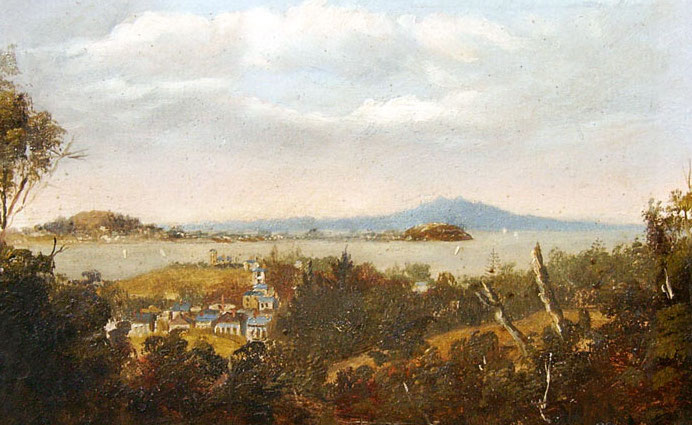
https://www.internationalartcentre.co.nz/auctions/catalogue/200803/QU12856/Auckland-Harbour-from-the-Domain
Links
Roger Blackley, Blomfield’s Terraces, https://www.victoria.ac.nz/__data/assets/pdf_file/0004/900634/Blomfields-Terraces.pdf
Charles Blomfield: His Life and Times by Muriel Williams, Reviewed by Michael Dunn. https://www.art-newzealand.com/Issues11to20/books1401.htm